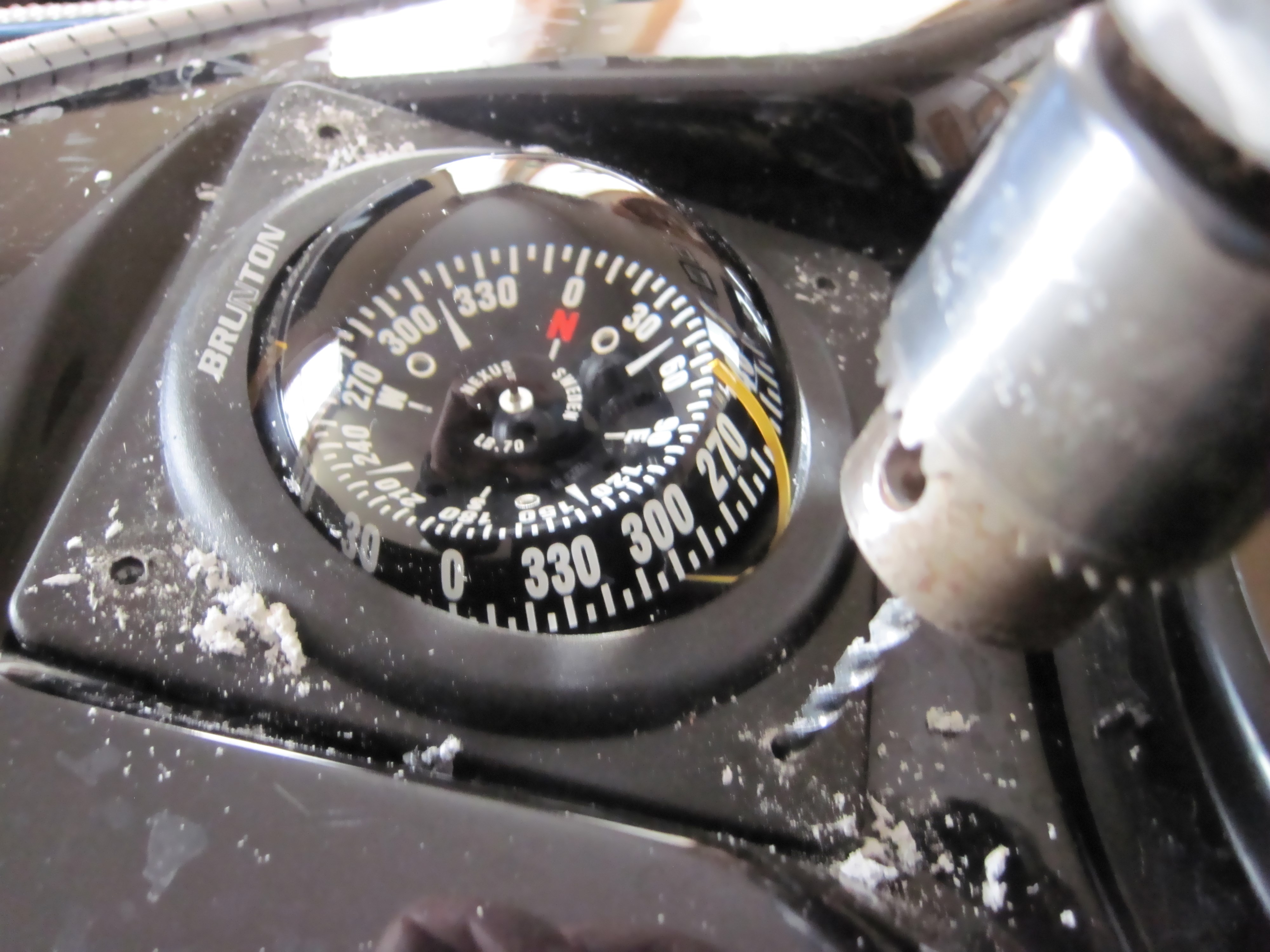COMPONENTS OF A MARINE COMPASS
- Compass Dome: allows the compass itself to operate smoothly. Think: the polymer dome protecting and magnifying the dial. It will also protect against extreme temperatures.
- Gimbal System: an internal gimbal system will help the compass function without bottoming out. The gimbals will hold the dial assembly within the axis system. Spring loaded brass pins will hold the gimbal system in place.
- Bowls and Housing: made from brass or glass-reinforced polymers, these elements provide extra protection for the internal compass fittings.
- Corrector Magnets: these non-interactive magnets are built-in compensators that can help if there are deviation problems.
- Fluid Baffle: reduces turbulence in dampening fluid.
- Roller Diaphragm: allows for fluid to expand or contract depending on the temperature.
---------------
DIFFERENT MOUNTING OPTIONS
There are many different ways to mount your compass. Here are details on 5 popular ways to mount yours:
- Surface: the compass can be placed on a variety of surfaces, mostly flat, and can be easily removed.
- Binnacle: the compass is mounted either on a steering pedestal or on a surface. This method is typically used for wheel-steered sailboats or powerboats with no extra room under the mounting surface.
- Bulkhead: this mounting option is popular in smaller sailboats and powerboats. They are placed on the dashboard and styled to match the other instruments.
- Flush: this compass-type is placed half above the surface and half below the surface. The compass is set in a cutout on a horizontal surface.
- Bracket: these types are placed in brackets and can be mounted on a multitude of surfaces with different tilt angles.
---------------
INSTALL A COMPASS
The first step when installing a compass is to find the right spot for it. You’ll want to pick a visible location that is convenient for the captain. It must be aligned with the fore and aft axis of the boat to allow for the correct aligning of the magnetic field. You do not want any other magnetic instruments or electrical wires near the compass, as they could comprise its accuracy. Next, twist night light wires around one another to cancel out their magnetic fields. Finally, check for any deviations.




